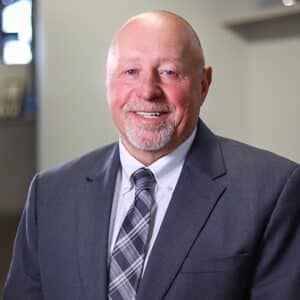I had heard of the Build Maine conference held every year in Lewiston for many years and had always wanted to attend but never could find the time in my schedule to make it happen. I just liked the sound of what was on the agenda – it was focused on development, restoration, and downtown revitalization among other things. The promotion of the event and its sponsors included a lot of entities and communities that I have interacted with over my almost-40-years of involvement on the development (building) of Maine.
Earlier this year I had made a commitment to attend the event in 2020. Well you know what happened, COVID-19 hit us and the conference was cancelled, as was almost every conference since the beginning of March and continuing until further notice.
The leadership of Build Maine came up with a great idea to continue the conference. After much work and planning, they were able to put together a program that included six speakers over five different Thursdays (approximately 2.5 hours each day). Each session began with a roundtable discussion for about 30 minutes before the featured speaker gave their presentation followed by a Q&A. The event was held via a Zoom platform, that I will say was very well attended and included approximately 230 individual attendees and was interactive not only via voice but through the chatroom as well.
The speakers were excellent and included Mike Lydon from Street Plans, Sharon Woods from LandUseUSA, Chris Hawley and Bernice Radle from Buffalo, Kaid Benfield from PlaceMakers, and Charles Marohn from Strong Towns. Most of the references below are credited to the speakers.
Below are some of the takeaways I had for each presentation building off what the speaker discussed.
How does COVID-19 effect development ideas and planning methodology.
There was a lot of discussion relative to today’s worldwide pandemic and how planners and developers deal with the situation. COVID-19 is redefining how we move around our communities and changing the way we interact with other people and businesses. Conference participants realized that with continued pressure on municipal finances, it is becoming clear that governments must find ways to quickly adapt, enable new ideas, and respond to emerging needs, and that there is a greater role for everyone in the act of placemaking. We also discussed strategies for how elected officials, municipal staff, local residents, and businesses can work together to rethink the role of streets and quickly execute changes to improve safety and support an increase in hyper-local living.
Studies and more studies.
The attendees and speakers discussed the need for data and information to plan with. We discussed how communities and developers routinely conduct market studies to better understand local gaps and needs for urban housing. However, those studies are usually based on what has already been built, so they risk reinforcing redundancies, building types, and practices. We discussed using the innovative Target Market Analysis approach shifting the focus onto the lifestyles of migrating households and their preferences for missing housing formats. This approach is particularly relevant while we contemplate the possible impacts that the current economic and health crisis could have on cities and urban places.
Today’s zoning dilemma.
There was a fair amount of discussion concerning zoning and local government. The discussions focused on how governments can struggle when changing outdated zoning codes, particularly in today’s heightened political environment. It was explained why simplifying and improving your community’s zoning code can make a big difference to local quality of life, as well as the financial and economic strength of your community. One of the discussions shared concerned how the City of Buffalo’s eliminating parking minimums from local zoning help the overall community landscape and suggested other communities look at a similar move. We discussed new form-based codes and how they have made small-scale projects more feasible and easier to execute. Other discussion centered around how small-scale infill development can revitalize areas, provide a way for more people to break into the real estate development field, and help build the range of housing types that are so desperately needed.
The climate isn’t done changing.
As our country continues to see changes in our environment, Maine is working to not only reduce carbon emissions, but also address the national blind spot in the conversation – specifically the environmental implications of land use patterns. The coronavirus pandemic has also brought into focus an urgent need to create and sustain communities that support healing and healthy lifestyles. The good news is there are land development strategies that support both human and environmental health.
Infrastructure and money.
Municipalities across Maine are dealing with tightening budgets and a growing list of unfunded infrastructure obligations, including routine maintenance and replacement of roads and utilities, creating more strain on local governments and local services. At the same time, more people are moving back to small towns and city service centers, leading to an increase in pressure on roads and rising vehicle-related fatalities. If you would like to hear some of the solutions check out Chuck Marohn’s Strong Towns, A Bottom-Up Revolution to Rebuild American Prosperity where he explains why we seem to have lost the American edge on prosperity and what we can do to get it back.
Would I attend again?
I got to hear from a variety of experts who related how our current economic and environmental climate continue to shape our needs in communities. I will certainly attend this conference again even if it must be held virtually (although I hope I can attend in person).










